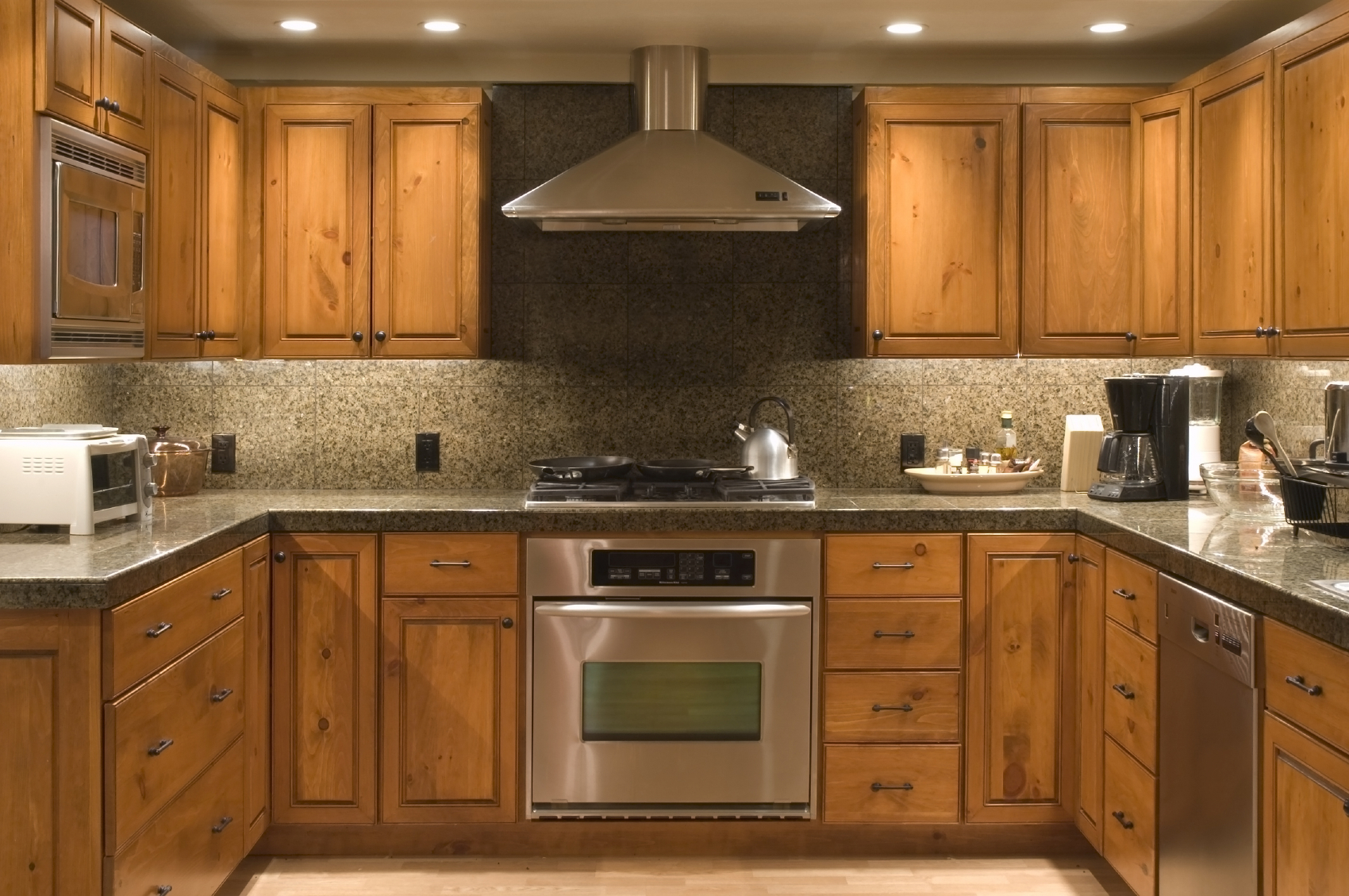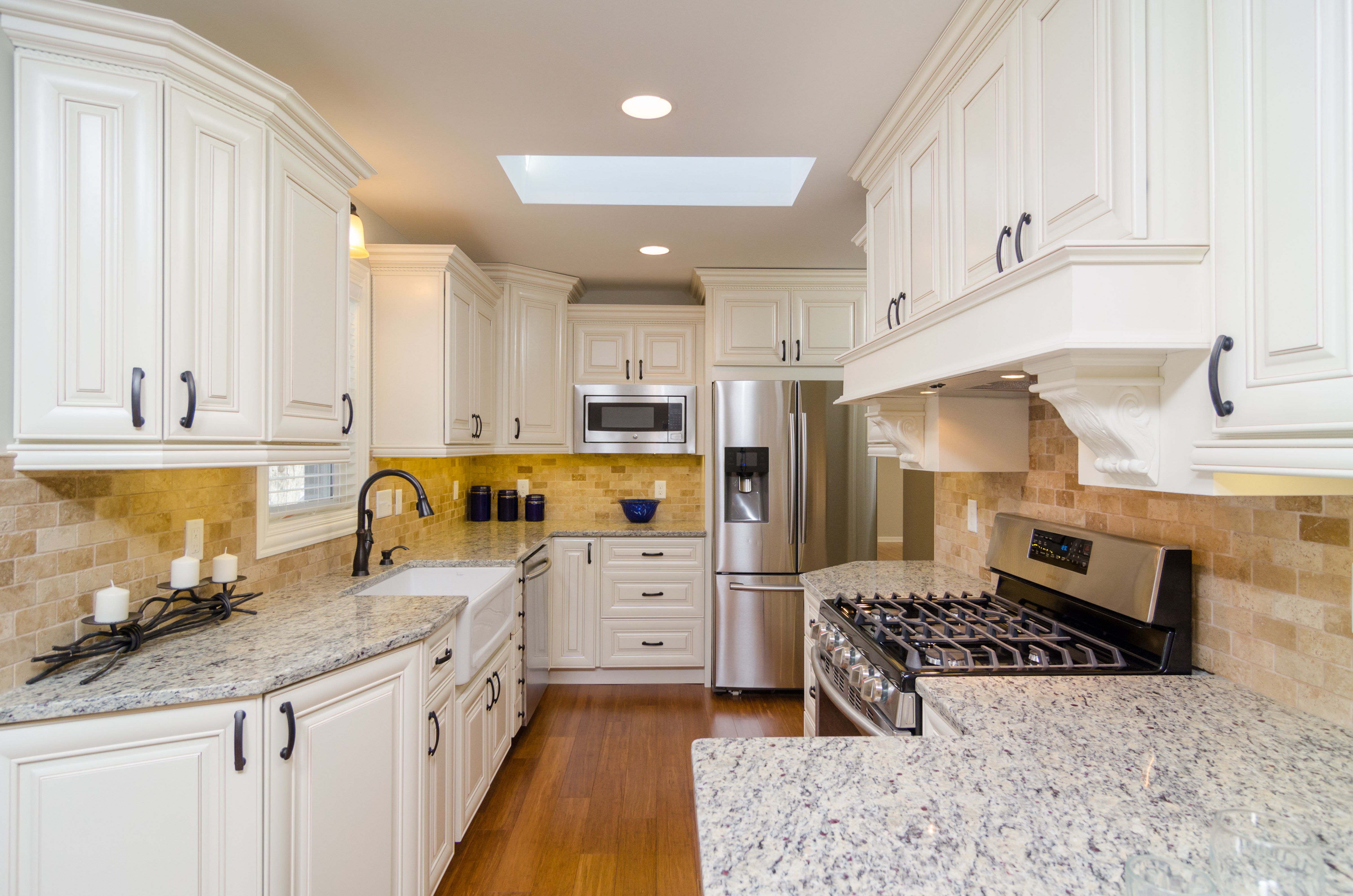Benefits of Kitchen Floor-to-Ceiling Cabinets
The kitchen is often the heart of the home, a space where families gather, meals are prepared, and memories are made. However, kitchens can also be a battleground for clutter and disorganization, especially when dealing with limited storage space. Floor-to-ceiling cabinets offer a solution to this problem, maximizing vertical space and providing a sleek, modern aesthetic.
Maximizing Vertical Space
Floor-to-ceiling cabinets provide a significant advantage by maximizing the vertical space in a kitchen. By extending from the floor to the ceiling, these cabinets utilize every inch of available height, creating a substantial increase in storage capacity. This approach is particularly beneficial in smaller kitchens where floor space is limited, allowing for efficient use of the vertical dimension.
Improved Organization and Storage Capacity
Floor-to-ceiling cabinets significantly enhance organization and storage capacity. They provide ample space for storing a wide range of items, from everyday essentials to seldom-used appliances and seasonal cookware. The increased storage space helps to declutter countertops and cabinets, creating a more organized and functional kitchen. This organization, in turn, can improve efficiency and productivity in the kitchen.
Kitchen Layouts Benefiting from Floor-to-Ceiling Cabinets
Floor-to-ceiling cabinets are particularly beneficial in various kitchen layouts:
- Small kitchens: In small kitchens, maximizing vertical space is crucial. Floor-to-ceiling cabinets allow for efficient storage, preventing clutter and creating a more spacious feel.
- Open-concept kitchens: In open-concept kitchens, where the kitchen blends seamlessly with other living spaces, floor-to-ceiling cabinets can help to maintain a clean and organized aesthetic. They provide a visually appealing backdrop while concealing clutter and creating a sense of order.
- Kitchens with high ceilings: In kitchens with high ceilings, floor-to-ceiling cabinets can create a dramatic and impactful design statement. They add a sense of grandeur and sophistication while providing ample storage.
Design Tips for Incorporating Floor-to-Ceiling Cabinets, Kitchen floor to ceiling cabinets
- Consider the overall kitchen style: Floor-to-ceiling cabinets can be incorporated into various kitchen styles, from traditional to modern. Choosing materials and finishes that complement the existing design is crucial. For example, in a modern kitchen, sleek, minimalist cabinets with metal accents would be appropriate, while in a traditional kitchen, warm wood finishes and ornate hardware would be more suitable.
- Plan for accessibility: When designing floor-to-ceiling cabinets, ensure that items stored in the upper cabinets are easily accessible. This can be achieved through the use of pull-down shelves, step stools, or ladders.
- Consider lighting: Adequate lighting is essential for floor-to-ceiling cabinets, especially for the upper shelves. Under-cabinet lighting, integrated LED strips, or strategically placed pendant lights can provide sufficient illumination.
- Incorporate decorative elements: Floor-to-ceiling cabinets can be a design statement. Consider adding decorative elements such as glass doors, open shelving, or patterned tile backsplashes to enhance the visual appeal.
Design Considerations for Floor-to-Ceiling Cabinets

Floor-to-ceiling cabinets offer a multitude of benefits, but their design requires careful consideration to maximize functionality and aesthetics. From choosing the right cabinet type to selecting materials and incorporating smart features, every aspect plays a crucial role in creating a kitchen that is both beautiful and practical.
Cabinet Types and Designs
Floor-to-ceiling cabinets offer diverse design possibilities, allowing for customization to suit individual needs and preferences. Here’s a breakdown of common cabinet types and their characteristics:
- Open Shelving: Open shelving provides a minimalist and airy feel, showcasing your favorite dishes and kitchenware. It offers easy accessibility but requires meticulous organization to maintain a clutter-free appearance.
- Closed Cabinets: Closed cabinets offer ample storage space and help conceal clutter. They come in various styles, from traditional to modern, and can be fitted with doors, drawers, or a combination of both.
- Integrated Appliances: Integrating appliances like ovens, microwaves, or refrigerators into floor-to-ceiling cabinets creates a seamless and streamlined kitchen design. It maximizes space efficiency and enhances the overall aesthetic.
Material Selection for Floor-to-Ceiling Cabinets
Choosing the right materials for your floor-to-ceiling cabinets is crucial for durability, aesthetics, and overall kitchen ambiance. Consider the following materials and their characteristics:
- Wood: Wood is a classic and timeless material for cabinets, offering warmth, durability, and a wide range of finishes. Popular choices include oak, maple, cherry, and walnut, each with its distinct grain patterns and color variations.
- Metal: Metal cabinets, particularly stainless steel, offer a sleek and modern look. They are highly durable and resistant to scratches, making them ideal for high-traffic areas. However, metal can be susceptible to fingerprints and require regular cleaning.
- Laminate: Laminate is a cost-effective and versatile option, offering a wide range of colors, patterns, and textures. It is highly durable and resistant to moisture and stains, making it a practical choice for kitchens. However, laminate lacks the natural beauty and warmth of wood.
Kitchen Layout with Floor-to-Ceiling Cabinets
Integrating floor-to-ceiling cabinets into your kitchen layout requires careful planning to optimize space and functionality. Consider the following features:
- Integrated Lighting: Incorporate under-cabinet lighting to illuminate workspaces and showcase your cabinets’ contents. Consider LED strips for energy efficiency and long-lasting illumination.
- Pull-Out Drawers: Utilize pull-out drawers for easy access to items stored in lower cabinets. They prevent unnecessary bending and reaching, making your kitchen more user-friendly.
- Corner Solutions: Optimize corner space with lazy Susans or pull-out shelves, maximizing storage capacity without sacrificing accessibility.
Ventilation and Fire Safety
Proper ventilation and fire safety measures are crucial when installing floor-to-ceiling cabinets. Consider the following:
- Ventilation: Ensure adequate ventilation to prevent moisture buildup and ensure proper air circulation. This is especially important for kitchens with high humidity levels.
- Fire Safety: Install smoke detectors and fire extinguishers in accordance with local building codes. Avoid overloading electrical outlets and use fire-resistant materials for cabinet construction.
Practical Considerations and Installation: Kitchen Floor To Ceiling Cabinets

Floor-to-ceiling cabinets, while aesthetically pleasing and space-saving, require careful consideration and execution during the installation process. The practicality of this design choice depends heavily on the size of the kitchen and the existing infrastructure.
Considerations for Small Kitchens
Small kitchens often benefit from floor-to-ceiling cabinets, maximizing vertical space and minimizing clutter. However, it’s crucial to ensure the cabinets don’t overwhelm the space, making the kitchen feel cramped. A good design strategy is to utilize lighter colors and reflective surfaces to create an illusion of spaciousness.
Considerations for Large Kitchens
In larger kitchens, floor-to-ceiling cabinets can be used to create a sense of order and organization. However, it’s important to avoid making the kitchen feel sterile or impersonal. Integrating open shelving or displaying decorative items can help break up the uniformity and add warmth.
Installing Floor-to-Ceiling Cabinets
Installing floor-to-ceiling cabinets is a complex process that requires careful planning and execution. The following steps Artikel the essential aspects of the installation process:
Preparing the Space
- Clear the area: Remove all existing cabinets, appliances, and fixtures from the designated space.
- Check the walls: Ensure the walls are plumb and level. Use a laser level to verify accuracy. Any imperfections should be addressed before proceeding.
- Measure and mark: Accurately measure the space and mark the positions for the cabinets. Use a pencil and level to ensure precise placement.
Installing the Cabinets
- Install base cabinets: Begin by installing the base cabinets, securing them to the wall using appropriate fasteners. Ensure the cabinets are level and plumb.
- Install upper cabinets: Attach the upper cabinets to the wall, ensuring they are aligned with the base cabinets. Use shims to adjust for any unevenness in the walls.
- Install the crown molding: Once the cabinets are secured, install the crown molding to create a seamless finish and conceal any gaps between the cabinets and the ceiling.
Finishing Touches
- Install hardware: Attach cabinet doors, drawer fronts, and handles.
- Clean up: Remove any debris and dust from the installation process.
- Enjoy your new kitchen: Your floor-to-ceiling cabinets are now ready to enhance your kitchen’s functionality and aesthetics.
Common Challenges and Solutions
The installation of floor-to-ceiling cabinets can present several challenges, requiring solutions to ensure a successful outcome.
Uneven Walls
- Solution: Use shims to adjust for any unevenness in the walls. Ensure the cabinets are level and plumb before securing them to the wall.
Electrical Outlets and Plumbing
- Solution: Plan the placement of the cabinets carefully, ensuring that they do not obstruct any electrical outlets or plumbing fixtures. Consider using a licensed electrician or plumber to relocate or adjust any necessary fixtures.
Ceiling Height Variations
- Solution: If the ceiling height is not consistent, consider using custom cabinets or adjusting the height of the upper cabinets to accommodate the variation. Alternatively, use crown molding to create a seamless finish and conceal any gaps.
Integrating with Existing Appliances and Fixtures
Integrating floor-to-ceiling cabinets with existing appliances and fixtures requires careful planning and consideration.
Appliances
- Solution: Measure the dimensions of your appliances and ensure the cabinets are installed in a way that accommodates them. Consider using custom cabinets or adjusting the cabinet layout to fit the appliances.
Fixtures
- Solution: Ensure that the cabinets are installed in a way that does not obstruct any fixtures, such as light fixtures, smoke detectors, or sprinkler heads. Consider relocating any fixtures that interfere with the cabinet installation.
Kitchen floor to ceiling cabinets – Kitchen floor-to-ceiling cabinets offer maximum storage, but maximizing space in the upper corners can be tricky. A well-designed upper corner kitchen cabinet can be the solution, providing easy access to those often-forgotten spaces. By incorporating these cabinets into your floor-to-ceiling design, you ensure no inch of your kitchen goes unused.
Kitchen floor to ceiling cabinets offer a wealth of storage, but they also present a unique challenge when it comes to cleaning. The sheer verticality of these cabinets means that grease and grime can accumulate high up, making it difficult to reach.
Investing in a powerful degreaser for kitchen cabinets can help you tackle this issue, allowing you to maintain the pristine look of your floor-to-ceiling cabinets for years to come.

